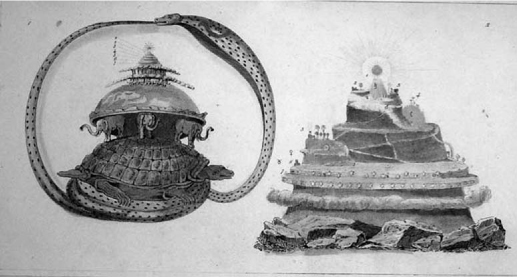Indian MythologyPost-Vedic Hinduism |
What is the Hindu cosmology? |
According to Hindu mythology, Mount Meru—like other Indo-European world mountains or world trees such as the Norse Yggdrasill—is at the center of the universe. It is surrounded by seven continents interspersed with oceans. At the top of the cosmos are the gods; then, moving down, the planets, including earth; then the underworlds, including the twenty-eight hells. The division of sacred space into the cardinal directions is reflected in the laying out of Indian towns and in the practice of rituals. It is the four directions that produced the three lokas (worlds)—the triloka of the cosmos, which is the earth, the atmosphere or space, and the world of the gods and the sun, moon, and stars. North is the realm of humans. East is that of the gods, who come to humans during the ritual sacrifices. South is the world of death and the ancestors. West is the realm of the animals and other aspects of life that provide sustenance.

1905 depiction of Mount Meru, which, in Indian mythology, is at the center of the universe.
